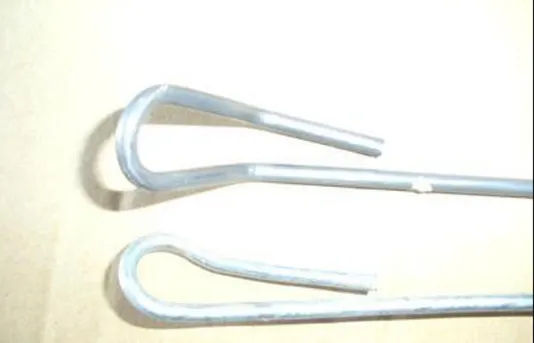-
 Phone:
Phone: -
 Email:
Email:

rock netting slope protection
Rock Netting Slope Protection An Effective Solution for Landslide Mitigation
Slope stability is a critical concern in civil engineering, particularly in areas prone to landslides and erosion. Natural terrains often present challenges that can lead to catastrophic failures, resulting in significant property damage and loss of life. Among various slope protection techniques, rock netting has emerged as a highly effective solution for mitigating these risks.
Understanding Rock Netting
Rock netting, also known as rockfall netting, involves the installation of a high-strength wire mesh anchored to the slope's surface. This method is specifically designed to capture and contain loose rocks and boulders that might be dislodged from a slope, preventing them from rolling down onto roadways, buildings, or other infrastructure. The netting effectively forms a barrier that harnesses the energy of falling rocks, reducing their speed and minimizing the impact force when they strike the net.
Advantages of Rock Netting
One of the primary advantages of rock netting is its versatility in various environments. This method can be employed in a range of geological forms, from steep mountainous terrains to gentle hillsides, making it a widely applicable solution in diverse regions. Additionally, rock netting systems are generally less visually intrusive compared to other forms of slope protection, such as large retaining walls or concrete barriers.
Moreover, rock netting installations are relatively quick to implement, allowing for fast response to potential slope failure sites. This speed is crucial, particularly in areas where road safety is impacted by unstable slopes. The netting does not require extensive excavation or earth-moving activities, which can disturb the natural landscape and lead to further erosion.
Environmental Considerations
rock netting slope protection

Incorporating rock netting into slope protection strategies also demonstrates a commitment to environmental sustainability. Unlike traditional methods that may involve heavy machinery and significant alterations to the natural ecosystem, rock netting allows for the retention of existing vegetation on slopes. The mesh itself can often integrate with the surrounding environment, promoting the growth of plant life that can further stabilize the soil and enhance biodiversity.
Furthermore, the use of rock netting can be less impactful on local wildlife. By preserving the habitat during construction and reducing the need for invasive mitigation methods, rock netting fosters a more harmonious co-existence with nature.
Installation and Maintenance
The installation process for rock netting involves several critical steps. Initially, a thorough assessment of the slope's geology is conducted to identify potential risks and determine the most appropriate netting system. Following this assessment, the netting is installed using anchors and cables to secure it to the slope. This process requires expertise and should be performed by professionals trained in slope stabilization techniques.
Maintenance is also an essential aspect of rock netting systems. Regular inspections are necessary to ensure the integrity of the netting and to identify any debris that may accumulate over time. Prompt maintenance can prevent small issues from escalating into larger problems that could compromise the effectiveness of the netting system.
Conclusion
In summary, rock netting offers a practical, efficient, and environmentally friendly solution for slope protection. Its versatility and relatively low impact on the surrounding environment make it an ideal choice for engineers and city planners confronted with the challenges of landslide risk management. As we continue to explore innovative methods for protecting our infrastructure and natural landscapes, rock netting stands out as a reliable option for enhancing slope stability while preserving the integrity of our ecosystems.
-
Wire Mesh for Every Need: A Practical SolutionNewsJul.25,2025
-
Steel Fences: Durable, Secure, and Stylish OptionsNewsJul.25,2025
-
Roll Top Fencing: A Smart Solution for Safety and SecurityNewsJul.25,2025
-
Cattle Farm Fencing Solutions for Maximum SecurityNewsJul.25,2025
-
Affordable Iron Binding Wire SolutionsNewsJul.25,2025
-
Affordable Galvanized Wire SolutionsNewsJul.25,2025
-
Wire Hanger Recycling IdeasNewsJul.25,2025








